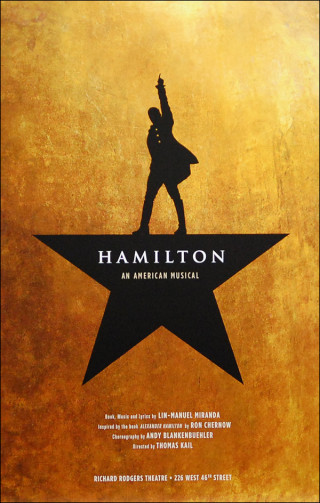How can one story simultaneously broadcast a contemptible message of myopic reverence for America’s founding fathers to some, while others take from it an equally powerful repudiation of everything those founding fathers represent? Unraveling this question requires understanding Hamilton as the messy, mutable product of two masters: its creator, Lin-Manuel Miranda, and the constantly roiling cultural context in which it’s been viewed, especially in 2020.
On one level, Hamilton is a wryly optimistic American love letter
Hamilton is nominally about the founding of America, written by a man who in many ways personifies the most idealized version of the American Dream. Miranda, a native New Yorker and son of Puerto Rican transplants, grew up in Washington Heights, tested into an elite prep school, wrote and staged his semi-autobiographical musical In the Heights while he was still in college, and saw that show become the toast of Broadway in 2007, when he was just 27.
A year later, Miranda read historian Ron Chernow’s acclaimed 2004 biography about Alexander Hamilton, the oft-overlooked founding father who, despite causing several scandals and dying prematurely in a famous duel, did as much as any of his co-founders to establish America’s economic and legal foundation. Miranda felt immediately that Hamilton was a kindred spirit — an immigrant who fell hard for New York City, who sparred with the other ideologues of his day, not unlike many of the great rappers of the 1990s.
Buoyed by these parallels, Miranda decided to write a hip-hop musical about Hamilton, featuring himself in the title role and using the template of historical America to explore modern America. He tied each of the founding fathers to iconic rap artists — the tactically taciturn Aaron Burr, for example, is “Javert [from the musical Les Misérables] meets Mos Def,” while Hamilton is “Eminem meets Sweeney Todd.” In the show, the fierce cabinet battles under President Washington become rap battles; the 10 historical rules for fighting in duels become an extended homage to Notorious B.I.G.’s “Ten Crack Commandments.”
Crucial to this entire conceit was casting mainly actors of color to play white historical figures. It’s a move that, along with the enlivening sound of hip-hop, instantly transformed Hamilton from a dry history lesson into an opulent, richly layered meta-text about the impossibility of fully accurate historical storytelling, about the American dream, and implicitly about the people of color who are so often left out of the narrative of that dream.
